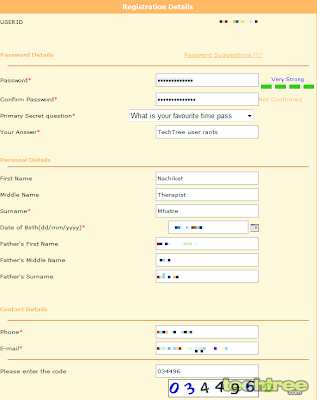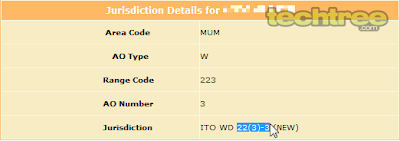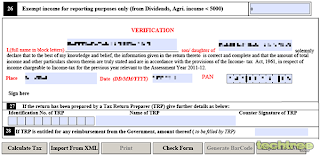Public Issues are in the air. You can call it the IPO season. It seems that the Primary Market is competing with Bollywood, releasing new issues every week. But before you share your hard earned money with the promoters of the company, it is very important to get a basic understanding about the various technical terms, abbreviations and jargons used in the primary market ( call it the IPO market). I have tried my best to explain in brief some of the key terms, without making any reference to the various sections and clauses governing the primary market. So here are a certain must know Public Issue (IPO) terms :
1. IPO : IPO stands for Initial Public Offer. An IPO is the first sale of shares of a company to the general public. The promoters of the company, after complying with the various guidelines of SEBI (Securities and Exchange Board of India) and The companies Act, ask the public at large to subscribe to their shares so that they can generate capital and utilize the same for expanding their business. A successful IPO can raise a substantially huge amount of capital.
2. FPO : FPO stands for Follow-on Public Offer. Once a company comes with an IPO , it gets listed on the stock exchanges. After a certain period of time, if the company again intends to raise capital from the general public, then it again comes with a public issue which is called an FPO (Follow-on Public Offer ). It is a supplementary issue made by a company once it is listed and established on the stock exchange. In short, the first public issue of a company is an IPO, and any further public issue of the same company is called an FPO. For example, Shipping Corporaton of India (SCI), a listed company, is again coming up with a public issue which will be its FPO ( i.e. a second public issue)
3. Listing : Once the issue gets subscribed and the shares are allotted, they are listed on a recognized stock exchange e.g. BSE, NSE etc. Listing means that company has adhered to the terms and conditions of the stock exchange and its shares are now a part of the list of shares which can be traded on the stock exchange. Post listing, any investor can sell the shares, allotted at the time of the issue, in the secondary market.
4. Bid-cum-Application Form : For applying in any public issue, each investor must fill a standard form providing all the relevant details like Name, PAN, Demat id, Bank account details, Bid price, Number of shares applied etc. Such a form is called a Bid-cum-Application form. It can be submitted through the offline or online mode. An investor must ensure that all the relevant details are filled correctly to avoid rejection of application and to ensure smooth allotment of securities.
5. Price Band : A price band is the range of price within which an investor can place his bid for the securities. The price mentioned by the investor in the bid-cum-application form can neither be less than the lower limit of the price band nor can it exceed the upper limit of the price band. For example, In the recent IPO of Coal India, the price band was Rs. 225-245 per share, which means that an investor can bid only within the range of Rs. 225 to Rs. 245
6. Floor Price : In a price band, the lowest price is called the floor price, below which a bid cannot be placed. In the above example Rs. 225 is the floor price of the Coal India IPO
7. Cap Price : Cap price is the upper ceiling limit in a price band beyond which a bid cannot be placed. Again, taking the same example of Coal India, Rs. 245 is the Cap price, beyond which you cannot place the bid.
8. Minimum order quantity : Minimum Order Quantity is the minimum number of shares which the investor has to apply for in a public issue. For example, in the case of Coal India’s IPO, the minimum order quantity was 25, i.e. an investor has to bid for atleast 25 shares.
9. Market Lot : If an investor wants to bid for shares which are more than the minimum order quantity, then he can do so by bidding in multiples of a certain number of shares which is known as the Market Lot. By continuing the above example, if an investor wants to apply for more than 25 shares of Coal India, then bids can be made in multiples of 25 shares, which is the market lot size in case of the Coal India issue. Thus, applications can be made for 25, 50, 75 …….number of shares until the maximum subscription limit is reached. In case of Coal India, the minimum order quantity and market lot size, both were 25 shares.
10. Maximum Subscription Limit for Retail Investors : Maximum Subscription Limit for Retail Investors is the maximum amount of investment which can be made though a single bid-cum-application form, or simply speaking, by a single individual, in a public issue. Previously, retail investors were allowed to make an application of a maximum of Rs. 1,00,000, but now SEBI has increased this limit to Rs. 2,00,000. Any application by an retail investor which exceeds Rs. 2,00,000 becomes an application by a High Net Worth Individual (HNI), thus disabling the investor to enjoy the benefits of discount which are offered in some big ticket IPOs to the retail investors.
11. Cut Off Price : In book building issues, the issuer company specifies a price band within which the bids are made. The actual issue price can be any price above the floor price and within the price band. This issue price is called the Cut Off Price. This price is determined after considering the demand for the stock by the investors. Investors, in order to get allotments in big ticket public issues, bid at the cut off price, conveying their intention that they are willing to pay any price for the stock within the price band, at the end of the book building process.
12. ASBA (Application Supported by Blocked Amounts) : ASBA is an alternative mode of making payments in public issues whereby the application money stays in the bank account of the investor until the allotment is made. Only that much amount of funds are debited to the investor’s bank account for which the allotment is made and the rest of the blocked amount is released. In case the application is made using the ASBA facility, the need for refunds is completely obviated. For example : if an investor makes an application for Rs. 2,00,000 , then in the earlier system, he was required to pay the entire sum of Rs. 2,00,000 upfront, either through a cheque or net-banking and then if shares worth Rs. 1,50,000 are only allotted, then Rs. 50,000 used to get refunded. Under the ASBA mechanism, the investor just need to keep Rs. 2,00,000 in his bank account and at the time of allotment only Rs. 1,50,000 would be debited to his account thus releasing the left over blocked amount of Rs. 50,000 and also doing away with the cumbersome task of issuing refunds.
13. Book Building Process : Book Building is one of the methods of carrying out a public issue, the other being the Fixed Price method. Under the Book Building method, the price at which securities will be offered is not known to the investor. The investor is allowed to bid in a given price range called the price band, and then, after the bids are closed & looking at the demand for the shares at various price levels within the price band, the final issue price is decided by the Merchant Bankers or BRLMs. This process leads to a better price and demand discovery. It is called the “Book Building Process” because during the entire issue period, the book for the offer remains open and keeps building up with the bids collected from investors.
14. BRLM (Book Running Lead Manager) : BRLM are those financial institutions whose names you find at the bottom of the bid-cum-application form like Karvy Securities, Kotak Mahindra, SBI Capital, Enam Securities etc. On a serious note, BRLMs or Merchant Bankers are those financial intermediaries which are involved in the IPO process right from the very first stage and play a vital role in preparation & submission of prospectus, price fixation, application processing, allotment and listing.
Happy investing
Source : www.n2moneymatters.com














.png)





